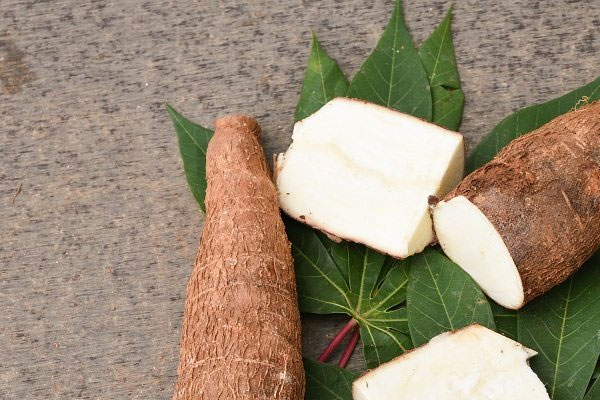
The main potato cultivated in tropical countries in the Tropical Asia, known as Botanic Scientology, is Mandioca esculenta. Tapioca, Cassava, Mandioca, Yucca are referred to as Maniacs in different parts of the world.
This is the main source of carbohydrate in African countries, where it is the world’s third major source of energy. (First-rice, second-corn)
Nigeria, Thailand, Brazil, and Indonesia are the most developed countries in African, Latin American and Tropical Asia, the most common crop growing in Africa. It is easy to adapt to various agro-ecological conditions for the manioc cultivation.
It is also the most effective in transforming solar energy into the starch. In addition to producing manioc processed foods, it is also used in the production of animal feed and industrial ingredients. It is a source of potential for the production of bio ethanol (bio-fuel).
Brazil is considered to be the birthplace of manioc and is believed to have been introduced by the Portuguese in Sri Lanka in 1786. In the past, this was an agropy agricultural crop, as well as a commercial crop as well as an export crop. As recommended by the Sri Lanka Agriculture Department, it can be successfully cultivated in a wide range of soil and climatic conditions up to 1,500 meters in the sea.
Manioc is also grown as an annual crop of the Dry Zone and a seasonal culinary delinquent in the wet zone and cropping in coconut and rubber. During the ten years from 2005 to 2015, Sri Lanka’s Manioc production has increased by 45% and in 2015, manioc production exceeds 300,000 metric tons.
In our country, this potato crop is mainly used as cooked (cooked or curry). Also, processed foods such as manioc chips have been recently matched as small industries. However, the use of processed food and industrial products is limited.
The manioc cultivation is the most popular crop among the low-resource crops, due to the ability to cope with impoverished land, to withstand drought, and to produce less units of land on the lowest inputs. However, it is a big problem when the manioc tubers become very undesirable (2 to 3 days) after the harvesting of Post-harvest life, ie after harvesting. Post -harvest Physiological Deterioration (PPD) contributes to this.
There are black and blue stripes in the tubers, and gradually the tubers are taut. Damage to potato tubers contributes to accelerating this process. So you need to keep the tubers safe. Similarly, bucket noodles, coir dust storage and refrigeration (40 C) can be used to control the PPD process for 2-3 weeks.
The main food of the manioc is the true root (potato) that stores its starch, and the Sri Lankan people are eating to eat its leaves. Manioc tubers provide mainly energy, and sometimes have more minerals, minerals, and fibers. It contains an abundance of leaf, prothlaxis and mineral salts (calcium, iron).
The presence of manioc planting, low flesh and the presence of poisonous components (cyanogenetic glycosides / cyanides) can be described as disadvantaged. But in the cooking of manioc and various processing methods, this poisoning is done without poisoning or poisoning.
The research is being carried out at the University of Sri Jayewardenepura for the improvement of the consumption of manioc and the use of industries. As a preliminary step, the three major manioc cultivars, the MU51, CARI 555 and Ki-remediats recommended by the Department of Agriculture of Sri Lanka, were determined to determine the amount of nutrients and the toxic component of the species. The results are as follows. (See table below.)
Similarly, 100 g of potatoes are included in the nutrient / mineral salts, sodium 90-130 mg, potassium 50-75 mg, calcium 80-115 mg and 20-40 mg of magnesium.
According to these results, MU51, CARI 555 and Ki-remediate contain low-dose iodine glycoside / cyanide, and according to the International Food Organization (FAO) classification, they are the least toxic varieties (cynaeides, 50 ppm).
kumudini






